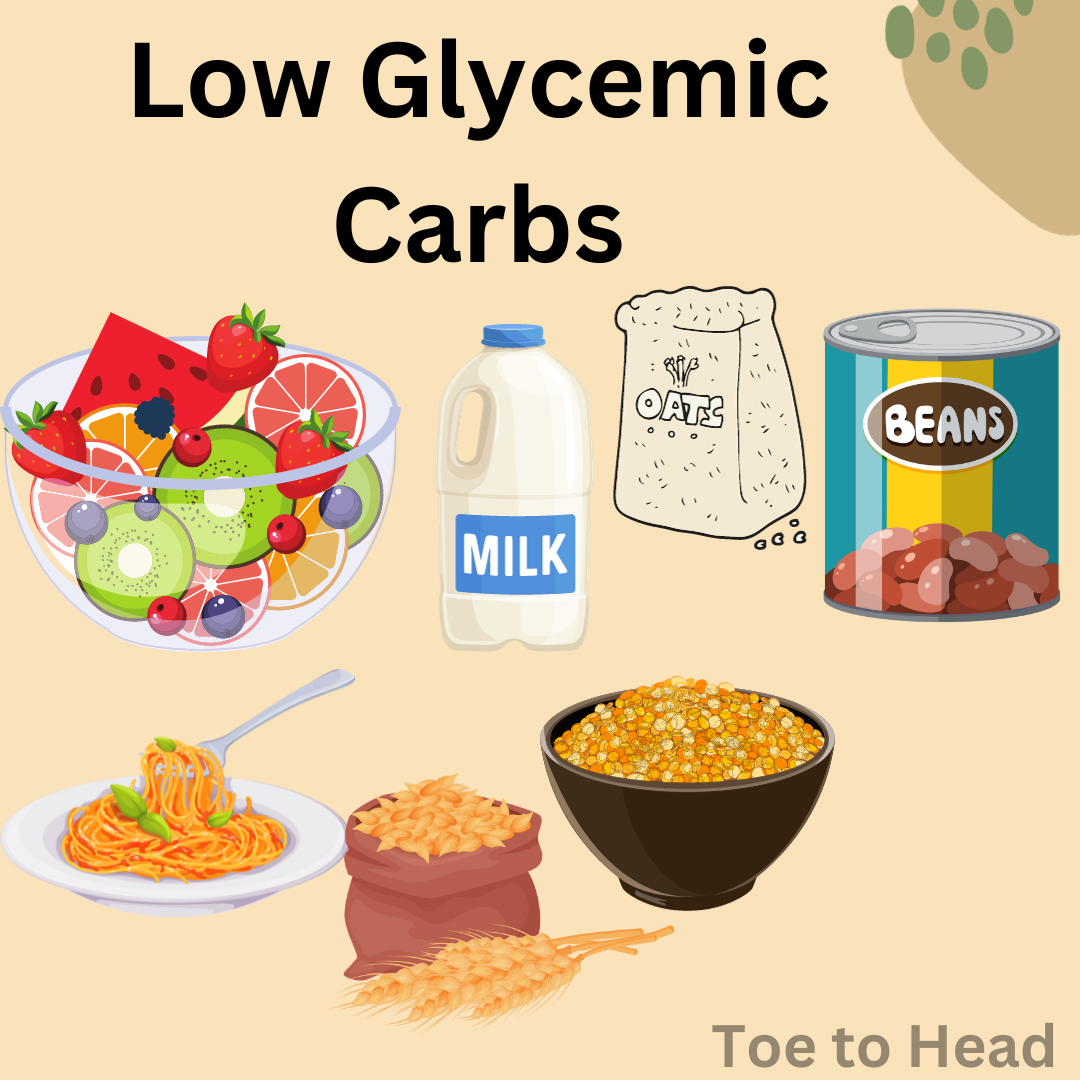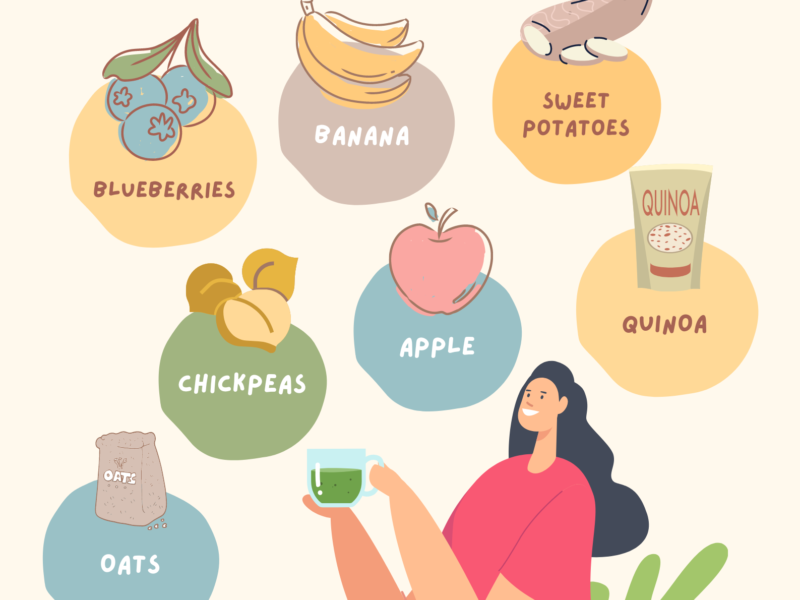It is very important to know how carbs affect our bodies if we want to eat in a healthy way that will last. Low-glycemic carbs are one area that is getting more and more attention. Here, we’ll look into the world of smart choices and find out the secrets and benefits of eating carbs that are low in glucose.
Introduction: The Power of Smart Choices
The idea of low-glycemic carbohydrates stands out as a healthy way to eat in a world full of fad diets and confusing nutrition advice. Let’s find our way around this world of smart choices and learn why health-conscious people are becoming more interested in low-glycemic carbs.
Defining Low-Glycemic Carbohydrates: A Brief Overview
Blood sugar levels rise more slowly and steadily after eating low-glycemic carbohydrates than after eating high-glycemic carbs. The glycemic index (GI) is a measure that ranks foods by how they affect blood sugar. Low-GI foods are broken down more slowly, giving you energy more slowly and helping you better control your blood sugar.
Steady Energy Release: The Key Benefit of Low-Glycemic Carbs
One of the best things about low-glycemic carbs is that they give you energy that lasts all day. Instead of making blood sugar rise and fall quickly like high-glycemic foods do, low-glycemic foods help keep energy levels steady, avoiding the dreaded mid-afternoon slump.
Blood Sugar Regulation: A Foundation for Wellness
Keeping blood sugar levels steady is important for your health as a whole. The ups and downs of blood sugar caused by high-glycemic foods can cause insulin resistance and raise the chance of getting type 2 diabetes. Low-glycemic carbs help keep blood sugar levels steady, which makes the body less stressed and better for long-term metabolic health.
Weight Management: The Connection with Low-Glycemic Carbs
People who are trying to lose weight may find that low-glycemic foods help them. They can help control your hunger by making you feel full for a longer time, which makes it less likely that you will eat too much. Also, having stable energy levels makes workout routines more effective and last longer.
Exploring Low-Glycemic Options: A Culinary Adventure
When you choose low-glycemic carbs wisely, you don’t have to give up taste. In fact, there are a lot of different and tasty low-GI foods out there. Enjoy the sweetness of berries, the heartiness of legumes, and the whole foods like quinoa and barley. Not only do these foods make you feel good, they also taste great.
Incorporating Low-Glycemic Carbs into Your Diet: Practical Tips
The change to a diet high in low-glycemic carbs is slow and worth it in the end. Start by switching from refined grains to whole grains, fresh veggies to sugary snacks, and legumes to protein sources. In the long run, small changes can have big effects.

Is rice high or low glycemic?
Different types and preparations of rice might have varying effects on the glycemic index (GI). The glycemic index (GI) of white rice is often greater than that of brown rice. With its bran and germ still intact, brown rice has a lower glycemic index (GI), making it a better option for people trying to control their blood sugar. However, it’s important to keep an eye on how your body reacts because of variables like portion size and metabolic considerations.
Are eggs high glycemic?
Quite the opposite, eggs have a low glycemic index. Eggs are a good source of protein and contain very few carbohydrates, so they don’t significantly affect blood sugar levels. They help maintain steady energy levels throughout the day because they are high in protein and have a low glycemic index.
Why is low GI good?
Foods low on the glycemic index (GI) are advantageous for a number of reasons. For one, they help to keep blood sugar levels steady for longer, which in turn can improve insulin sensitivity, lower the risk of developing type 2 diabetes, and make it easier to maintain a healthy weight.
Are bananas high glycemic?
Bananas have a moderate to high glycemic index, depending on their ripeness. Riper bananas tend to have a higher GI due to increased sugar content. However, bananas also contain essential nutrients like potassium, fiber, and vitamins, making them a nutritious choice. Moderation and considering the ripeness can help manage the impact on blood sugar.
Which rice is low glycemic?
In comparison to white rice, brown rice has a lower glycemic index. The processing of white rice removes the bran and germ, reducing its fiber content and increasing its glycemic index. With its bran and germ still intact, brown rice is higher in dietary fiber, which delays digestion and absorption and thus reduces the glycemic response. Choosing brown rice can be a smart option for people wishing to prioritize low-glycemic carbohydrates in their diet.
Conclusion: Smart Choices for a Healthier Tomorrow
Our investigation on low-glycemic carbohydrates has shown that the foods we eat have a significant impact on our health. Incorporating low-glycemic carbs is a method worth investigating for sustained energy, better blood sugar regulation, and weight management. Always keep in mind that your food choices have a direct impact on your ability to lead a happier, healthier life. Incorporate low-glycemic carbohydrates into your diet and set the stage for a brighter, healthier tomorrow.



